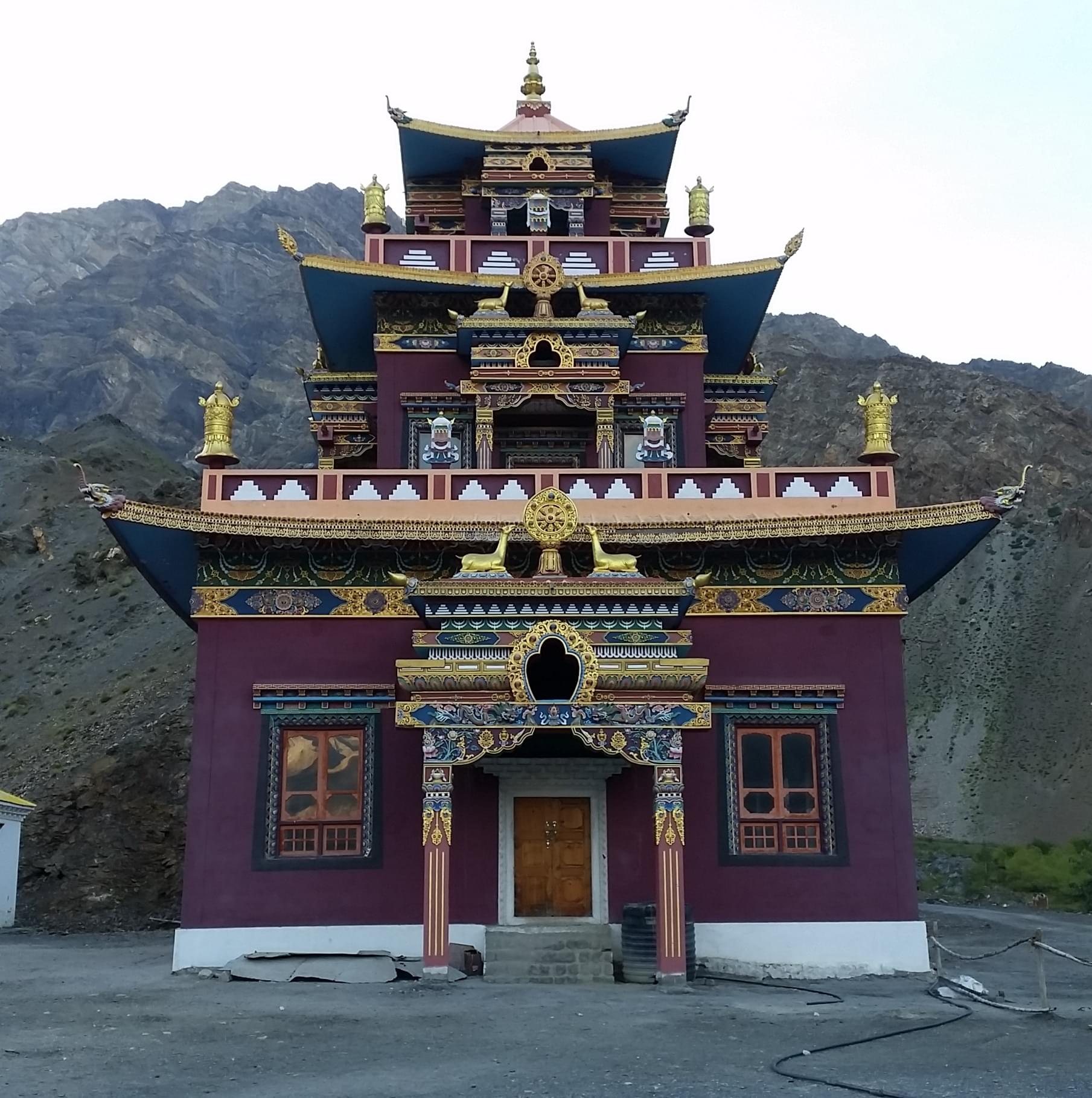About Gue Monastery
Besides boasting historical and spiritual values, Gue Monastery is set amidst a beautiful landscape. As a traveler, you can explore the monastery's intricate architecture, cravings on wood, and tinted windows.
This pilgrimage site is adorned with Buddhist sculptures and vibrant murals, immersing you in meditation and self-inspection. Around the Gue Monastery, you may interact with locals to learn about the place's history. Besides exploring the rich history, you are immersed in a spiritual narrative in the foothills of the Himalayas.
Gue Monastery Highlights
• Discover the 500-year-old Mummy at the Hue Monastery in Himachal Pradesh.
• Witness the mesmerizing sunrise and sunset views from the Gue Monastery premises.
• Go through century-old artifacts, books and manuscripts in the Gue Monastery, offering a glimpse of Tibetan culture.
• Shop souvenirs such as handicraft items, clothes, keychains and more from local shops outside the Gue Monastery.
• Indulge in the delicious Tibetan food at cafes and restaurants located around the Gue Monastery.
How To Reach Gue Monastery
By Car: Gue Monastery is located around 20 km from Sumdo, Himachal Pradesh. It will take around 27 minutes to reach your destination.
By Foot: Gue Monastery is around 20 km from Sumdo, Himachal Pradesh. It will take around 2 hours and 35 minutes to reach your destination.
Best Time To Visit Gue Monastery
Although the Gue Monastery remains open most of the year. The attraction remains closed during winter between mid-December and March due to heavy snowfall.
Best season: The ideal time to travel to the Gue Monastery is during the summer seasons, between June and September.
Best day in the week: Plan your tour to the Gue Monastery on Sundays.
The best time of the day: Early mornings between 7:00 and 11:00 am are the best time to explore the Gue Monastery.
Gue Monastery Other Essential Information
- Layer yourself as the temperature drops significantly during the day and evening.
- Wear comfortable shoes, as visiting the monastery includes a lot of walking.
- Keep the environment clean by carefully disposing of all the garbage in the dustbin.
- Do not shout or scream in the monastery's premises.
Eyewitness the well-preserved Mummy of Sangha Tenzin
One of the most talked about points of interest at the Gue Monastery is the Mummy of Sangha Tenzin, which is around 500 years old. It is a well-preserved mummy kept carefully in a glass case within the monastery premises. Travelers visiting here can eyewitness the 5-century-old Mummy sitting in a meditative posture. The most iconic part is that the Mummy has its hair and skin properly intact. This Mummy of Sangha Tenzin has fascinated people worldwide, including historians and scientists who visit this monastery to witness this natural preservation.
Read the Ancient Scriptures and Religious Artifacts
Gue Monastery is an abode of centuries-old ancient Buddhist scriptures and a precious collection of religious text. Inside the monastery, you can also glance at artifacts discussing the significance and historical values of this place. Visitors exploring the monastery get spell-bounded by the beautifully adorned prayer halls and chapels. These feature colorful murals depicting Buddhist teachings and deities. You may also glance at painted thangka scrolls and ornate sculptures of enlightened beings.
Admire Architectural Marvels
Gue Monastery is an architectural masterpiece reflecting the true essence of Tibetan culture, architecture, and intricate craftsmanship. The Gue Monastery features red-painted wooden beams, whitewashed walls, and ornamental motifs, building a striking sight to behold. Nestled against the snow-capped mountains and rugged Himalayan terrains, tourists here admire the Gue Monastery's main prayer hall adorned with decorative frescoes and intricately carved pillars. Inside the monastery is an altar for monks to meditate, chant text, and perform daily rituals.
Get a glance at Monastic Life and Daily Rituals
To add more to the experience, observe the everyday routine of the monks at the Gue Monastery. Visitors get awe-struck by witnessing the continuous chanting of holy texts and prayers and performing sacred rituals that hold great significance in Tibetan culture. The meditation room and the prayer room give a glimpse of the monks' simple lifestyle and their devotion to the almighty.
